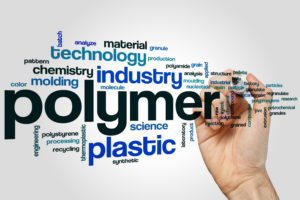How to Use the Macrogalleria

The Levels
The Macrogalleria is divided into five levels, as you may have noticed. These are not meant to be skill levels, though some pages are more involved than others. The divisions are simply made based on the nature of the material. Below is a discussion on how to use each level:
- Level One: Polymers are Everywhere
- Level Two: Polymers Up Close and Personal
- Level Three: How They Work
- Level Four: Makin' Polymers
- Level Five: Getting Polymers to Talk
Level One: Polymers are Everywhere
The goal of the first level is to show the students where polymers are found in everyday life, and to serve as springboard to lead them to the other levels of the Macrogalleria for a more in depth discussion of polymer topics. To do this, they can stroll through a fictitious shopping mall, visiting whichever stores they like. In each store, merchandise is pointed out which is made of polymers. The text identifies the type of polymer, and will contain hypertext links to pages on level two which describe those specific polymers in detail.
The whole idea of the first level is to present the relevance of polymer
chemistry in everyday life, through things which already interest the
students. A student who is athletic may go to the sporting goods store
and learn about tennis rackets made of carbon fiber while a student who
is a music lover may go to the record store and learn about compact discs
made of polycarbonate.
Level Two: Polymers Up Close and Personal
The goal of Level Two is to give the students information on specific polymers. The Level Two pages are all marked with blue title graphics. Each page on Level Two is a baseball card of sorts giving all the most important information about a specific polymer, its uses, and the basics of its synthesis (detailed synthetic chemistry is discussed on the pages of Level Four). Each page contains hypertext links to pages discussing general polymeric concepts which apply to that particular polymer. For example, the page on polyisoprene contains links to Level Three pages which discuss rubber and crosslinking, while the nylon page has links to pages discussing fibers and plastics.
Each page on Level Two also contains a link to a three-dimensional rotatable model of a short chain of the polymer in question. To view the models, just click on the link as indicated. The Chime plug-in we used to use for this is no longer avaialbe.
Due to the limitations of the modeling program, the models have low degrees of polymerization, much lower than the actual polymers. They are intended only to give the student an idea of what a segment of the chain of the polymer looks like. They are not intended to depict long range chain conformations, not are they intended to depict the true size of the polymers.
The models may be rotated by clicking on them with the left mouse
button, and dragging the mouse. The models may be altered by clicking on
them with the right mouse button. This will produce a menu.
Clicking on the menu items below the model will allow the
user to select between wireframe, stick, stick and ball, and spacefilling
models.
Level Three: How They Work
The goal of Level Three is to teach the basic concepts of polymer
physical chemistry. Every physical chemistry page is marked with a
red and yellow title graphic. Each pages deals with a specific general
concept,
and discusses principles which will be applicable to either all polymers
or at least a wide range of related polymers. Each page contains
hypertext links to pages dealing with related concepts. For example, the
page dealing with rubber will have links to the page dealing with
crosslinking, and the page dealing with plastics will have links to pages
discussing the glass transition and polymer crystallinity.
In addition to polymer physical chemistry, Level Three contains pages
which don't really fit any traditional category. These are pages devoted to
things like polymer composite materials, families of polymers (like
dienes, vinyls, and acrylates), and inorganic polymers. These
"leftover" pages are all marked with blue and yellow title graphics.
Level Four: Makin' Polymers
The goal of Level Four is to provide the student with detailed
information concerning the synthetic chemistry of polymers. These
synthetic pages are marked with read and black title graphics. Included
are pages
dealing with reactions which can be used to produce many different
polymers, such as free radical vinyl polymerization, as well as reactions
for making one specific polymer; for example the page entitled "Making
Nylon 6,6". In addition, there are pages dealing with other aspects of
making products from polymers, such as the manufacture of composite
materials from polymers.
Many of the synthesis pages contain links to pages showing movies of the
reaction mechanisms. Viewing these movies requires that you download
Macromedia Shockwave The Works. To download this plug-in, either follow
the link at the top of the introductory page, or just click here. When you
get to the Shockwave page, fill out the form, and on item three on the
form, select "other", then click on the "get Shockwave" button. Then you
will be taken to the proper page to download Shockwave The Works.
The fifth level of the Macrogalleria deals with polymer characterization,
how polymers are studied. Each page, headed with red, green, and black
title graphics,
deals with a different technique used to study polymers. Pages deal with
techniques for determining things like molecular weight, polymer
structure, and thermal properties. Both instrumental and "wet" chemistry
techniques are discussed.
Level Five: Getting Polymers to Talk

Return to
Macrogalleria Main Directory